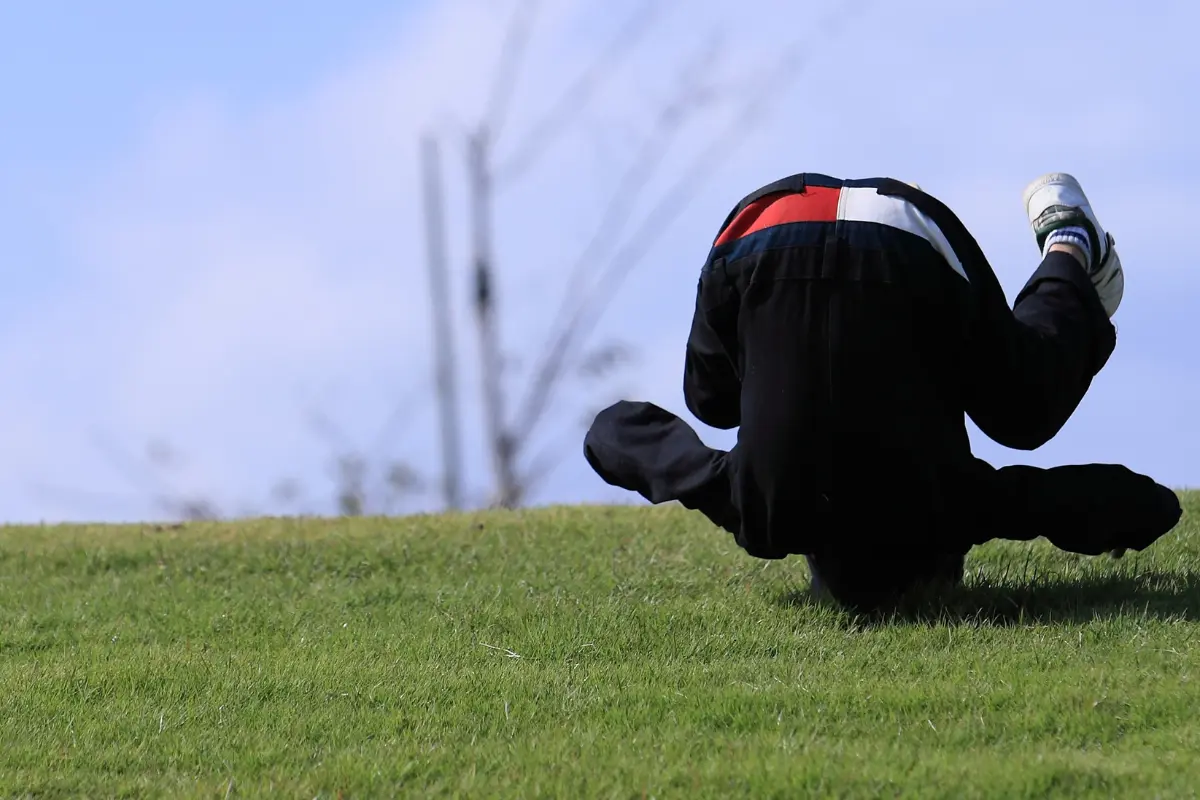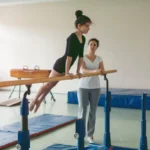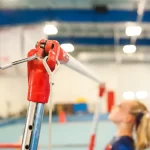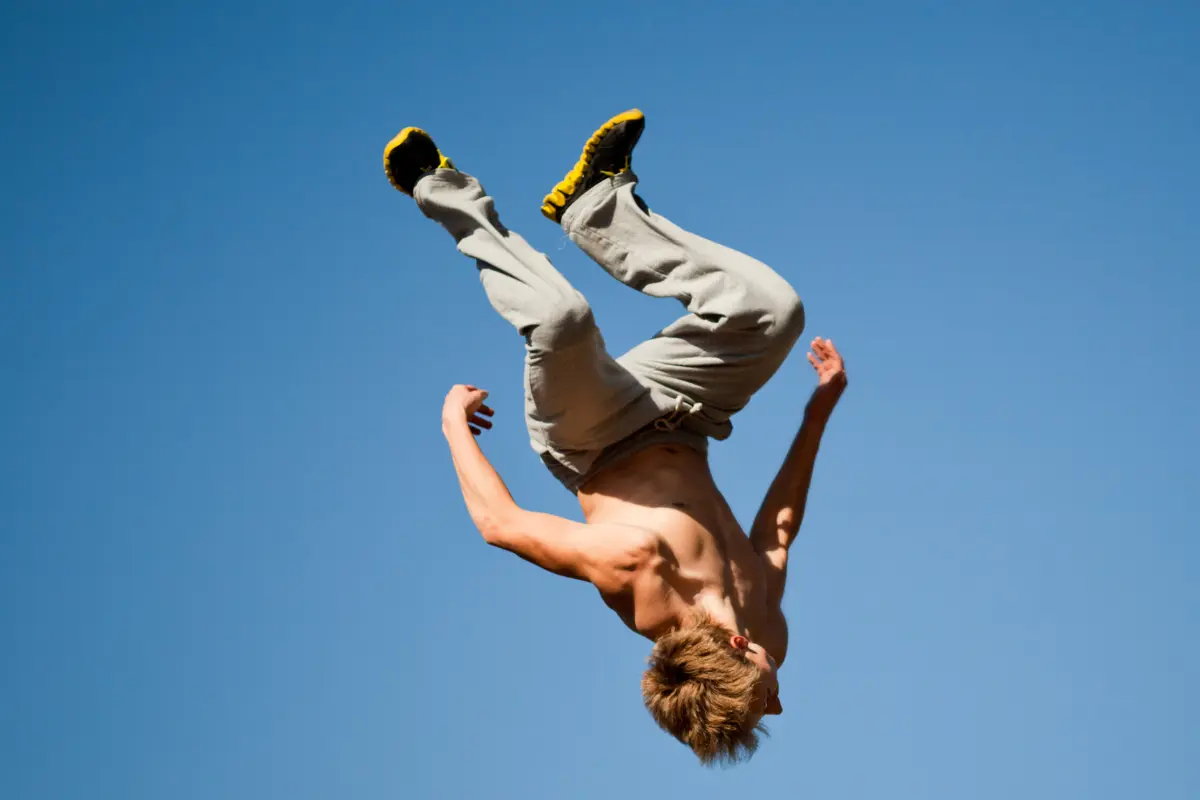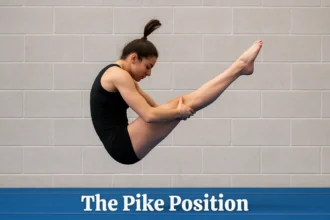Learning the forward roll is a fantastic entry point into gymnastics. This simple yet essential move helps you build balance, control, and body awareness, making it ideal for beginners.
This guide will break down each step, highlight common mistakes, and provide tips for achieving a smooth, controlled roll.
1. Preparation and Safety
Before attempting the forward roll, find a comfortable and safe practice area. A padded mat or carpeted surface works best. Avoid practicing on hard surfaces like wooden floors to prevent discomfort or injury. Warming up is crucial, especially for the wrists, as they will bear weight during the roll.
Wrist Stretch:
Place your hands flat on the floor, fingers facing forward. Gently press down to stretch your wrists. Properly warmed-up wrists will help you maintain control and prevent injury during the roll.
2. Getting Into Position
To start, kneel on the mat with your knees bent. Begin in a low, seated position rather than standing, as this reduces the risk of falling and helps you focus on technique.
Steps to Positioning:
- Sit back slightly on your heels.
- Place your hands in front of you on the mat, shoulder-width apart.
- Keep your arms extended but relaxed, ready to support your weight as you initiate the roll.
Key Points for a Successful Forward Roll
The forward roll might look simple, but several common mistakes can affect the movement. Here are some tips to avoid these pitfalls and ensure your roll is smooth and controlled.
- Avoid Putting Your Head on the Mat: One of the most common mistakes is pressing the head down directly onto the mat. Instead, think of gently tucking your chin towards your chest without pressing down. This helps you roll onto your upper back, avoiding neck strain.
- Control Your Leg Movement: Many beginners kick their legs out or spread them apart during the roll. To avoid this, focus on keeping your legs tucked in and close to your body.
- Tuck Your Head and Keep Your Body Compact: Think of curling yourself into a tight ball as you roll. This shape helps create a smooth, continuous motion.
3. Executing the Forward Roll
With your hands on the mat, it’s time to initiate the roll. Follow these steps closely to complete a controlled forward roll.
- Start in the Ready Position: Begin by kneeling with your knees bent and your hands placed shoulder-width apart on the mat. Ensure your arms are extended but relaxed, ready to catch and guide your weight through the roll.
- Initiate the Roll: Lean forward gently, pushing off with your feet while keeping your back rounded and your body compact. Imagine you are curling into a tight ball as you move forward.
- Tuck Your Head: As you begin the roll, bring your chin to your chest and tuck your head in. This prevents your head from touching the mat and allows you to roll smoothly over your upper back. Think of your neck as an extension of your spine, allowing the roll to flow naturally.
- Roll on Your Upper Back: Allow your upper back, not your neck or head, to make contact with the mat. This is the key to a safe and controlled forward roll. Try to let the roll move through your spine in one fluid motion.
- Tuck and Hold: As you reach the halfway point of the roll, grab your knees or keep your legs tucked tightly toward your body. This helps you maintain balance and control as you finish the movement.
- Complete the Roll and Rise: Use the momentum from the roll to sit up and, if possible, stand up in one smooth motion. Ideally, your feet will land flat on the mat, giving you a stable foundation to rise from. If standing is difficult at first, focus on reaching a seated position and gradually build up to standing with practice.
With these steps, you’ll find the forward roll feels smooth and efficient, with less strain on your body. Practice each part of the roll slowly at first, and as you gain confidence, let the roll become more fluid.
4. Practicing Control and Precision
Developing control and precision in your forward roll will help you build the coordination and strength needed for more advanced skills. Practicing specific exercises can improve your technique, especially if you struggle to complete the roll or to stand up smoothly at the end.
Rocking Back and Forth Exercise
This simple exercise helps you understand the roll’s momentum and strengthens the muscles used to complete it.
- Starting Position: Sit on the mat with your knees bent and tucked toward your chest. Hold your shins to keep your legs close to your body, staying compact.
- Rock Backward: Slowly lean back until your upper back touches the mat, then roll forward. Try to maintain a smooth and controlled motion, using your core to bring you forward and back without losing your balance.
- Plant Your Feet and Rise: After a few gentle rocks, place your feet flat on the mat as you rock forward. Use the momentum to push yourself up into a seated position, then, if you feel steady, into a standing position.
Repeat this exercise several times to build muscle memory and enhance the fluidity of your forward roll.
Partner Assistance
Practicing with a partner can give you extra guidance and support as you perfect your roll.
- Guiding Your Motion: A partner can place their hand at your back or side to help keep you on a straight path, preventing you from rolling to one side. This gentle support can also help you stay balanced and aligned.
- Boosting Confidence: Having someone nearby can ease any hesitation, especially if you’re new to rolling or feel unsteady. They can offer a light push or give feedback on your form, helping you understand any adjustments you might need to make.
Controlled Roll-Stop Practice
For additional practice, try rolling without standing up at the end. Instead, focus on finishing the roll in a controlled, stable seated position, pausing there briefly before returning to the starting position.
This exercise reinforces body control and teaches you to regulate momentum, making it easier to rise at the end as you improve. Practicing these drills will strengthen your foundation, helping you master the forward roll with control and precision.
5. Troubleshooting Common Issues
Mastering the forward roll may come with a few initial challenges. Here are solutions to common issues beginners face when learning this foundational gymnastics skill:
1. Head Touching the Mat
- Issue: If you find your head touching or pressing into the mat during the roll, it may cause discomfort and interrupt the flow of the movement.
- Solution: Focus on tucking your chin toward your chest as you initiate the roll. Visualize “hugging” your chest with your chin, which will naturally guide you to roll over your upper back instead of your head. Remember to keep your arms in front to support your body weight as you roll.
2. Rolling to One Side
- Issue: Many beginners struggle with rolling in a straight line and may lean or veer to one side, making it hard to finish the roll smoothly.
- Solution: Check your arm and hand placement before starting the roll. Both hands should be equally spaced, directly in front of you, to help guide your body forward evenly. Focus on keeping your body tight and compact throughout the roll, which will help maintain balance. Practicing with a partner who can guide you or placing a visual marker on the mat to follow can also help.
3. Difficulty Standing Up After the Roll
- Issue: Rising to a standing position after the roll can be challenging, especially if you lack the necessary momentum or balance.
- Solution: Incorporate the rocking exercise to build up strength and coordination for standing up smoothly. Practice rocking back and forth from a seated position, placing your feet on the mat as you rock forward to push up. Over time, this will help you control the movement and transition into standing up more easily.
4. Legs Kicking Out
- Issue: Some beginners extend or kick their legs out during the roll, which disrupts balance and makes the roll look less fluid.
- Solution: Keep your legs tucked in close to your chest throughout the roll. Imagine holding a small ball or hugging your knees, which will help you maintain a compact shape. Practicing the roll in slow motion can also reinforce this muscle memory and improve control.
5. Lack of Momentum
- Issue: Insufficient momentum can cause you to get “stuck” in the roll, making it challenging to complete or stand up afterward.
- Solution: To build momentum, push off gently with your feet at the beginning of the roll. Focus on curling your body tightly as you initiate the movement, allowing gravity and a slight push to guide you through. If needed, practice the rocking exercise to get comfortable with the forward motion and the timing of standing up.
6. Fear or Hesitation
- Issue: Many beginners feel hesitant, especially during the initial stages of learning the roll, which can lead to tense muscles or stopping mid-roll.
- Solution: Take the time to practice slowly and build confidence with each step. Starting from a low position, like kneeling, can reduce the intimidation factor. Practicing with a friend or instructor who can gently guide you through the roll can also help ease any fear and provide reassurance.
As you improve, the movement will become smoother and more natural, forming a solid foundation for advancing in gymnastics.
